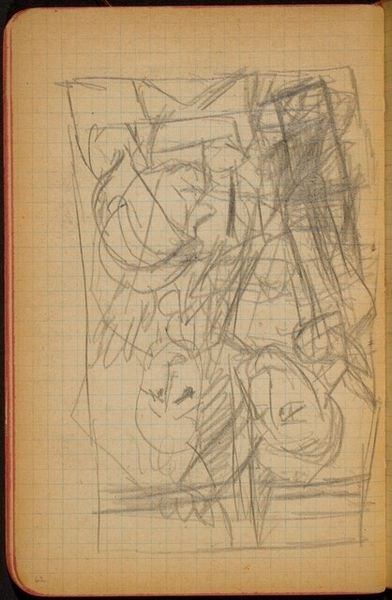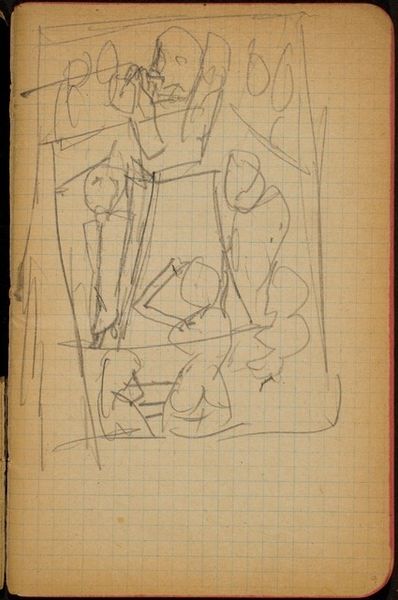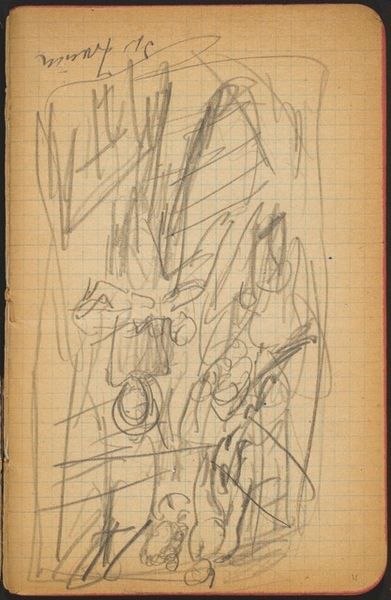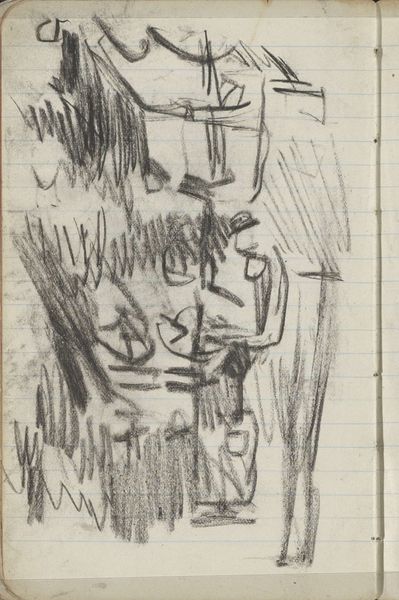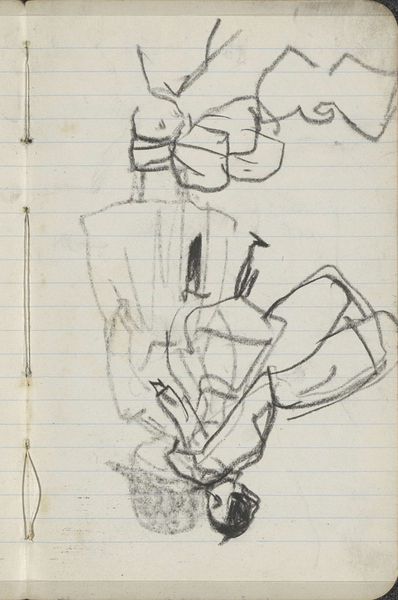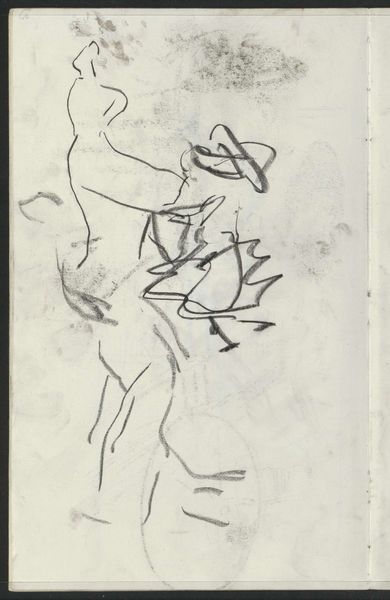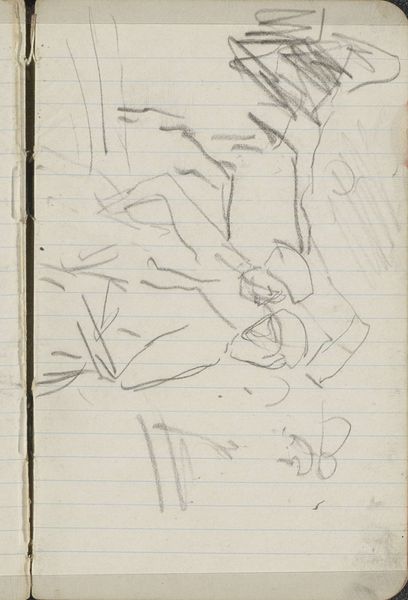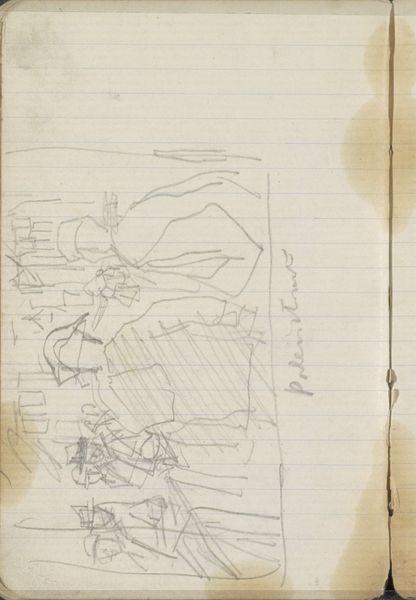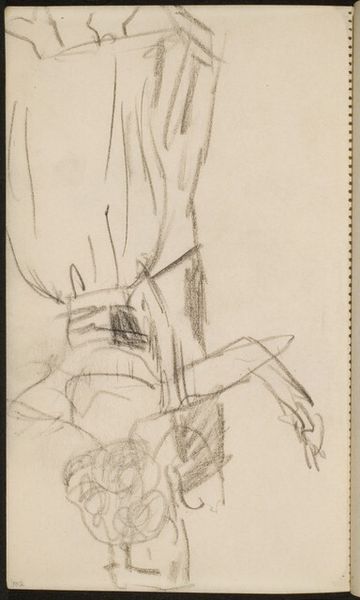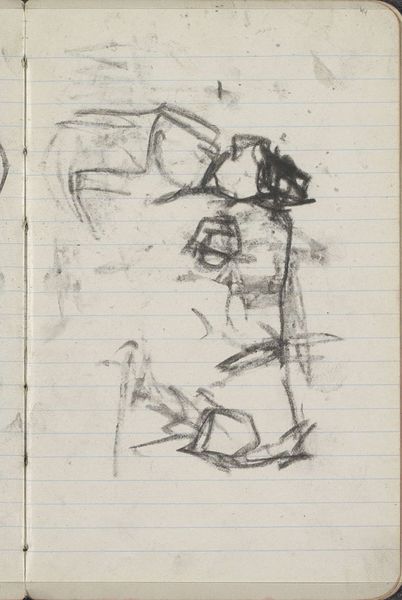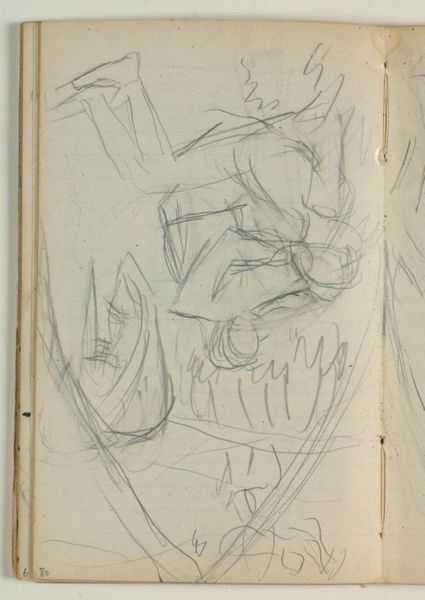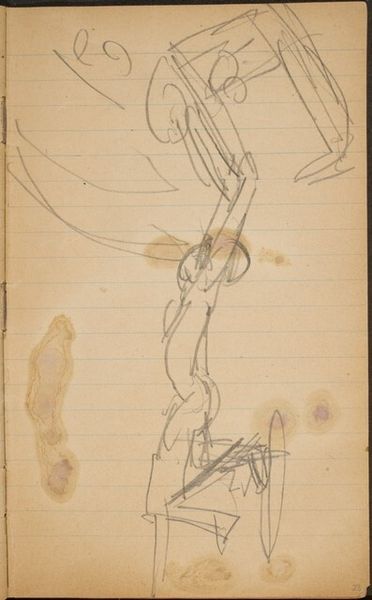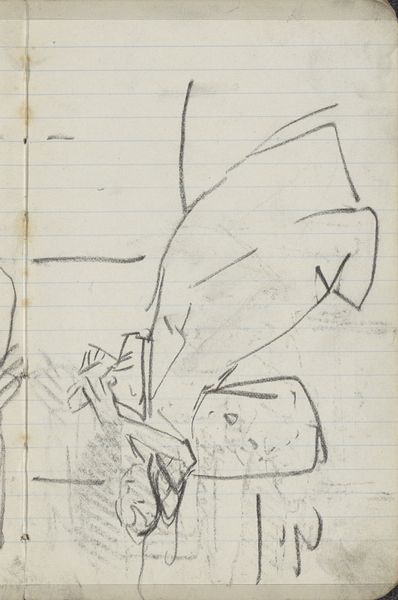![Mehrfigurige Kompositionsskizze (Figural Composition) [p. 60] by Max Beckmann](/_next/image?url=https%3A%2F%2Fd2w8kbdekdi1gv.cloudfront.net%2FeyJidWNrZXQiOiAiYXJ0ZXJhLWltYWdlcy1idWNrZXQiLCAia2V5IjogImFydHdvcmtzLzU0Yjk2OGQ3LTQ5YzUtNDdmMC1iNDlkLTc0ODdlNDcyM2MxYy81NGI5NjhkNy00OWM1LTQ3ZjAtYjQ5ZC03NDg3ZTQ3MjNjMWNfZnVsbC5qcGciLCAiZWRpdHMiOiB7InJlc2l6ZSI6IHsid2lkdGgiOiAxOTIwLCAiaGVpZ2h0IjogMTkyMCwgImZpdCI6ICJpbnNpZGUifX19&w=1080&q=75)
Mehrfigurige Kompositionsskizze (Figural Composition) [p. 60] 1918 - 1919
0:00
0:00
drawing, pencil
#
drawing
#
figuration
#
pencil
#
expressionism
Dimensions: page size: 15.8 x 10.5 cm (6 1/4 x 4 1/8 in.)
Copyright: National Gallery of Art: CC0 1.0
Editor: So, this is Max Beckmann’s “Mehrfigurige Kompositionsskizze” – a Figural Composition from 1918-1919. It’s a pencil drawing, quite small. It feels claustrophobic, like figures crammed into a box. I’m wondering what it was that Beckmann wanted to express through it, and how this fits into what was happening historically and socially around that time. What do you see in this piece? Curator: A vital question! Beckmann, situated in post-World War I Germany, certainly reflected the unease and fragmentation of society. The tight composition underscores this palpable tension. These figures, seemingly trapped within the confines of the page, represent the social constraints and psychological burdens many felt during the Weimar Republic. How do you think Expressionism plays into communicating this feeling? Editor: I guess the distortion and intensity amplifies the sense of discomfort. It's not trying to present a 'pretty' or idealized picture. The rawness gives it a disturbing feel that perhaps a more traditional style couldn't. Do you see it as overtly political? Curator: Not overtly, no. Its power lies in its suggestion. Art doesn't have to be propaganda to have social impact. Beckmann hints at a world out of joint, encouraging reflection. Think about the institutional support – or lack thereof – for such potentially unsettling works at the time. Did this affect its reception by the public, do you think? Editor: That’s fascinating. The lack of institutional support makes you wonder about whose voices get amplified and remembered. It adds a different layer to appreciating Beckmann’s work, understanding the hurdles his expression faced. Curator: Precisely. Context is crucial. Considering the historical environment reveals deeper layers within this “simple” sketch, it offers insights into public reaction and censorship back then. Editor: I'll definitely keep that context in mind when viewing Expressionist pieces now; it changes my whole perspective! Curator: And it also suggests avenues for how imagery today gets consumed by the public.
Comments
No comments
Be the first to comment and join the conversation on the ultimate creative platform.
